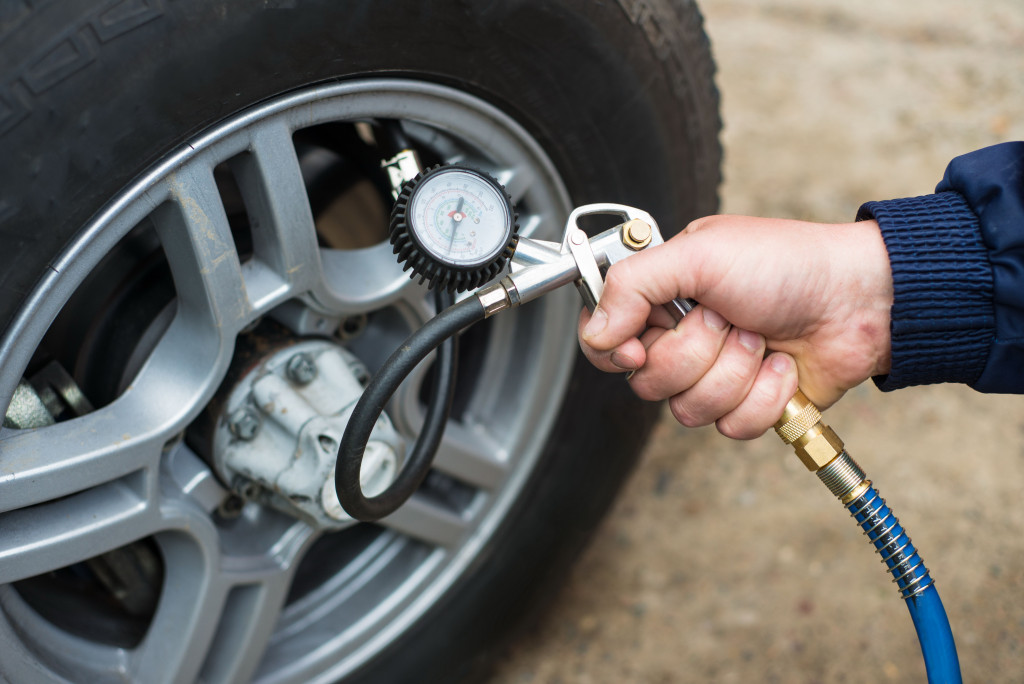• Regularly check tire pressure and inspect the vehicle for cracks, rust, worn-out brake pads, leaks, or any unusual noises.
• Keep up with vehicle safety testing by visiting a certified MOT center for inspections.
• Ensure you have the right insurance plan to protect you financially and make sure it covers liabilities and comprehensive coverage.
• Stay informed of the latest vehicle safety laws and renew your registration on time.
As a car owner, staying up-to-date on all the essential tasks needed to keep your vehicle running smoothly and safely is essential. You want to be able to enjoy your car for many years and keep it in the best condition for your own safety. With technology advancing each year, here is a compiled list of the tasks you should remember as a car owner in 2023.
Explore these key steps below.
1. Regularly Check Your Tire Pressure
Tire pressure is critical when it comes to driving safety. Low or overinflated tires can cause accidents and reduce fuel efficiency. You must check the tire pressure before taking off on any drive longer than 30 minutes. An easy way to remember this task is to check your tires every time you fill up at the pump!
Some cars are now equipped with tire pressure monitoring systems (TPMS), which alert you when the tires need to be checked. This kind of system is increasingly common in newer vehicles, so familiarize yourself with it. A godsend for busy car owners, TPMS is a great reminder to take care of your vehicle. Just make sure you know how to reset the sensors when needed.

2. Inspect Your Vehicle Regularly
While it may seem tedious, making sure you inspect your car for any damages can help save you money in the long run. You want to check for any of the following:
Cracks or rust
Although rust may be inconvenient to fix, it’s essential to address it as soon as possible. If left unaddressed, rust can cause costly damage and make your car unsafe to drive. It would be best if you also were on the lookout for any cracks that may have occurred over time.
Worn-out brake pads
Your brakes are one of your vehicle’s most essential parts and must be replaced regularly. While newer cars may last up to 70,000 miles without a brake change, older cars may need a change at around 30,000 miles. So be sure to inspect them regularly and replace them when needed.
Leaks or fluid seepage
When it comes to leaks, you should pay attention to the floor of your car and the oil in your engine. Make sure you check for any seepage that may have occurred and address it as quickly as possible.
Unusual noises
Unusual noises can be a sign of trouble with your vehicle. If you hear any unusual sounds, take your car in to get it checked.

3. Keep Up with Vehicle Safety Testing
One of the most important things to do as a car owner is to keep up with vehicle safety testing. Different states have different laws about how often you need to get your car tested, so make sure you stay informed. To comply, you should visit a certified MOT testing center and have a qualified technician inspect your vehicle for any issues. This will also help you save money in the long run and give you peace of mind that your car is safe to drive.
To stay up-to-date with the latest vehicle safety laws, you can sign up for email alerts from your local DMV. They will notify you when it’s time to renew your registration or your car’s safety inspection. Just don’t forget to check your vehicle for any potential issues before taking it in!
4. Make Sure You Have the Right Insurance Plan
Insurance is essential to help you cover any unexpected costs that may come up. Make sure you have the right coverage to protect yourself in an accident. You want to ensure that you’re protected financially and not overpaying for coverage you don’t need.
Also, be aware of the different types of insurance available. Liability insurance, for example, covers damage to other people’s property or injuries they sustain in a car accident. Comprehensive coverage is another form of insurance that covers damages caused by theft, fire, and other events.
Owning a car involves many responsibilities—especially regarding safety and maintenance tasks! By following this guide and staying informed, you can ensure your car is operating at its best for many years to come. Always keep up with any necessary vehicle tests, inspect your car regularly, check tire pressure, and ensure you have a reliable insurance plan. With the right knowledge and dedication, you can keep your car in top shape.
